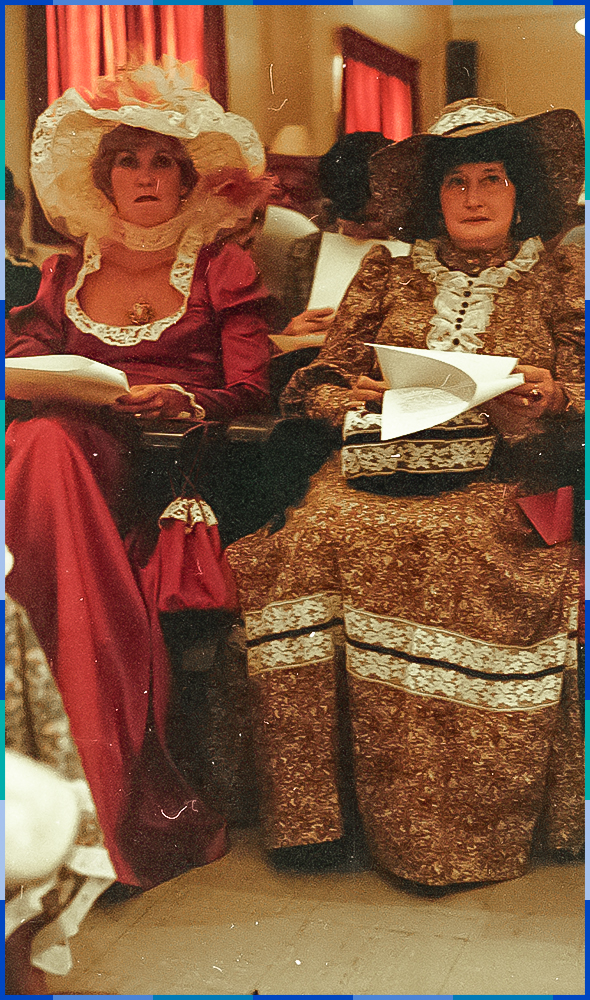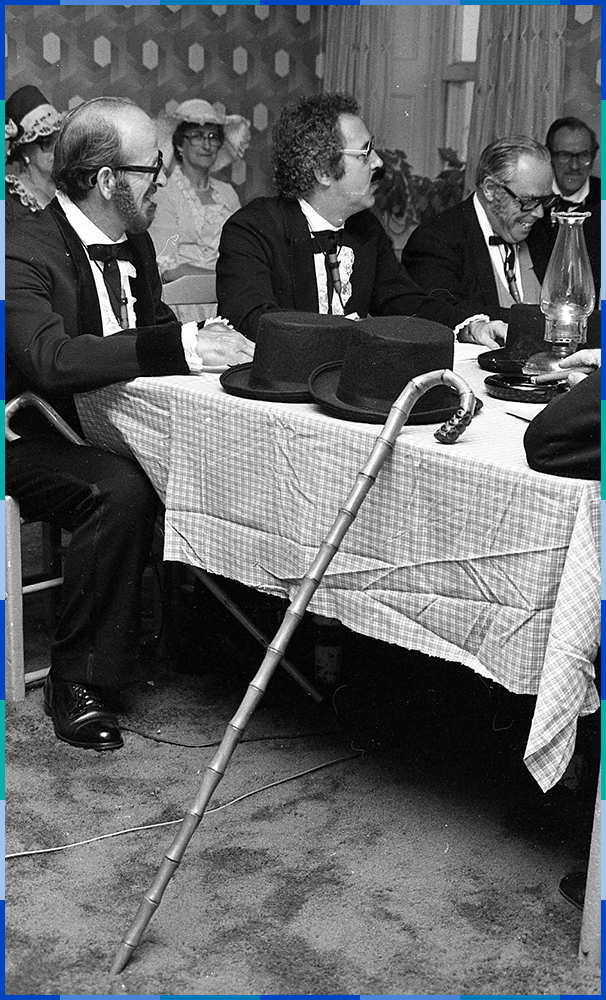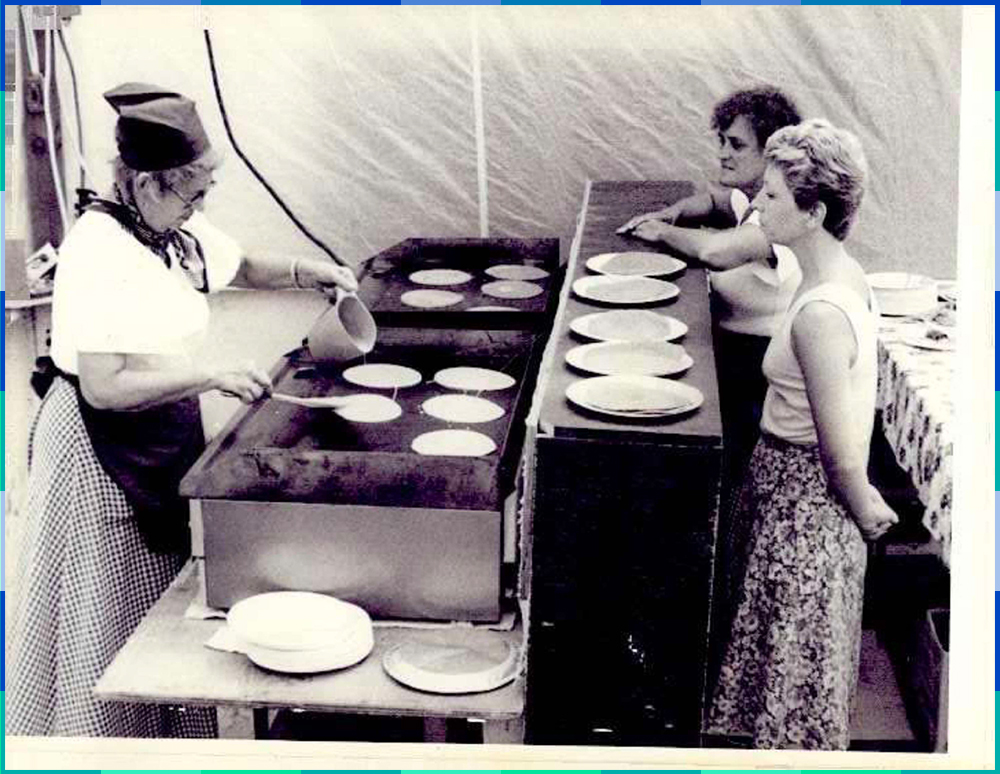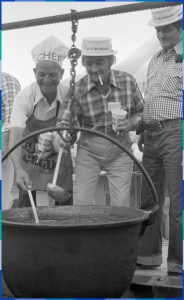Getting Ready for the Big Event!
You go upstairs. All sorts of aromas are emanating from the kitchen. Your neighbour’s mom is standing in the doorway:
Look, I’ve finished my dress for the Fêtes!
During the Fêtes, Old Saint-Eustache is all decked out and everyone is encouraged to dress up, ideally in clothes inspired by 19th-century fashions. Even the municipal councillors join in, putting on period costumes to recreate municipal council sessions from that era. A pattern for a woman’s costume from the time has been made publicly available by the Fêtes organization. It’s inspired by the work of Mademoiselle Beauce, a seamstress who was once known for having “as much taste as her sisters in France”. Your friend’s mom continues:
And I’m going to sew a shirt to go with your dad’s arrow sash!
The dad in question is in the kitchen standing over a large pot. He’s testing his gargotte recipe – a local specialty made of fish (originally bullhead), pork, chicken, vegetables, and “the chef’s secret spices”. He and a few of his fellow members of the Knights of Columbus will be cooking this dish during the Fêtes.

Sylvain H. Boileau, photographer for the local newspapers, 1977
Volunteer involvement during the event by Sylvain H. Boileau. Listen to the audio excerpt in French, the written transcription is available in English.
In addition to gargotte, another local dish, “bouilli canadien”, which is made of meat, lard, vegetables, and stock, and “galettes de sarrasin” (buckwheat pancakes) will be featured at the Fêtes. Seeing the bewildered look on your face, your neighbour’s dad explains that buckwheat was one of the staples eaten by the Québécois since the founding of New France. In the early 19th century, buckwheat pancakes were an economical breakfast served everywhere. But sixty years later, buckwheat has practically disappeared from Québec tables, replaced by a variety of cereals.
Like you, many people will taste buckwheat pancakes for the first time at the Fêtes. And they are made with flour from the city’s own mill, the Légaré mill! It has become a symbol of Saint-Eustache. Washed down with cider from Deux-Montagnes, they are a treat!





